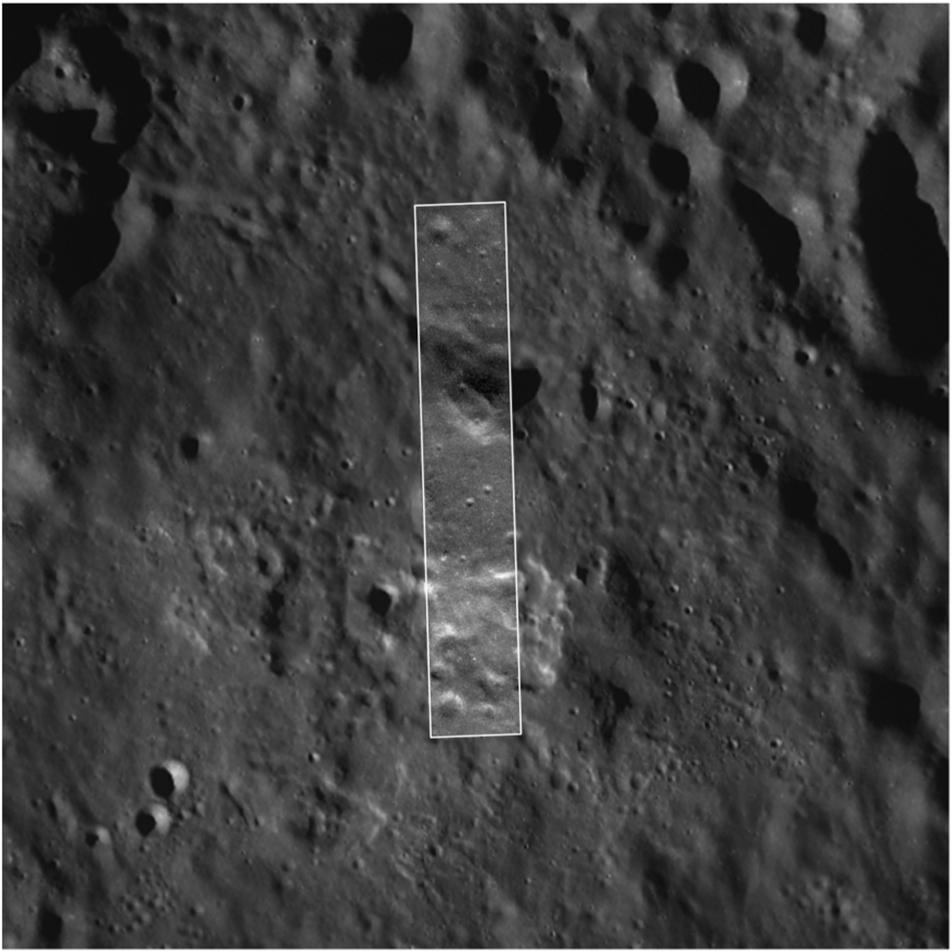
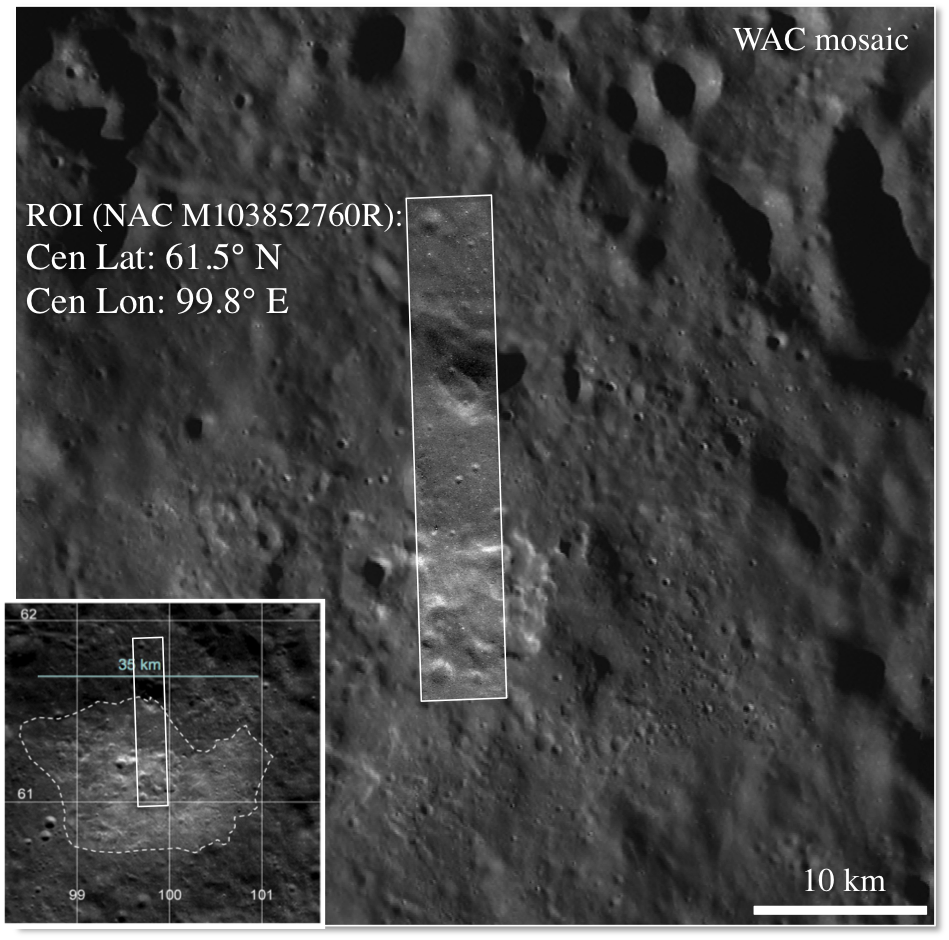
Most volcanism on the Moon is basaltic, but several datasets indicate areas where silicic or felsic rocks occur as a result of nonmare (non-basaltic) volcanism. Many of these silicic areas are high in thorium and low in iron, as detected by the Lunar Prospector Gamma Ray Spectrometer. These areas also tend to have higher reflectance than their surroundings. Correlations between iron and thorium observed in Apollo samples suggest that a silicic rock type such as granite or rhyolite may be present in these areas.
LROC NAC images show features like cones and domes that indicate volcanism occurred in the area, and measurements from the LRO Diviner Lunar Radiometer show evidence that the rocks are indeed silicic. A recent study of several potential silicic volcanic sites, including the Compton–Belkovich Volcanic Complex (CBVC), Hansteen Alpha Volcanic Complex, the Gruithuisen Domes, the Lassell Massif, and ejecta of Aristarchus Crater, revealed new details concerning these sites based on observations of their reflectance in NAC images. Both the composition of materials and their physical properties (particle size, shape, roughness, and porosity) determine how much light will be absorbed or reflected back to the observer when viewed from different angles, or when the Sun is at different angles above the horizon.
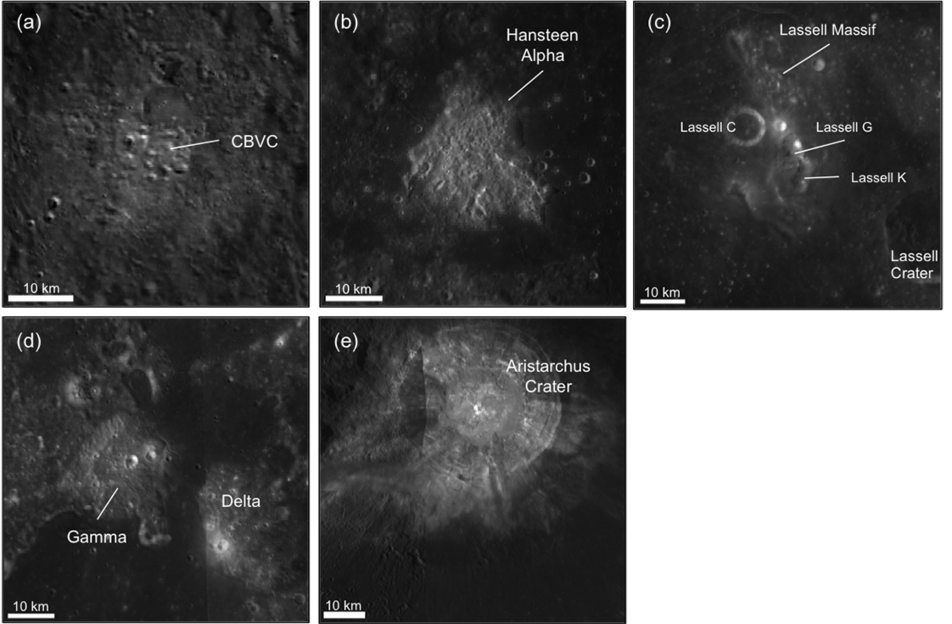
Several of the silicic sites identified on the Moon. a) Compton–Belkovich Volcanic Complex (61.1°N, 99.5°E), b) Hansteen Alpha (12.3°S, 50.2°W), c) Lassell Massif (14.7°S, 9.0°W). d) Gruithuisen Domes (36.6°N, 40.1°W), e) Aristarchus ejecta (23.2°N, 48.2°W). All images were created by overlaying a WAC normalized reflectance mosaic on the WAC global 100 m/pixel mosaic [NASA/GSFC/Arizona State University].
When combining compositional data obtained from Apollo, Luna, and Chang’e-3 observations with high resolution NAC reflectance, it is possible to estimate that the area is rich in silicic materials and has low abundances of mafic minerals. Comparisons with laboratory spectra of analogous terrestrial materials suggest it is possible that the increased reflectance at this site is due to the addition of up to 20% silicic/rhyolitic glass to otherwise typical highland soil. Such glass may have formed when lava erupted explosively into the cold vacuum of space, and quenched into a glass as it fell back to the lunar surface, before minerals had time to crystallize. This type of volcanic process is known as a "pyroclastic" eruption. Other evidence for pyroclastic eruptions at the CBVC come from radar and spectral data, an eastward extension of the thorium anomaly, and an offset between the high-reflectance and elevated topography at the CBVC. The pyroclastic glasses may also contribute to the high reflectance in the area, the highest of any site included in this study.
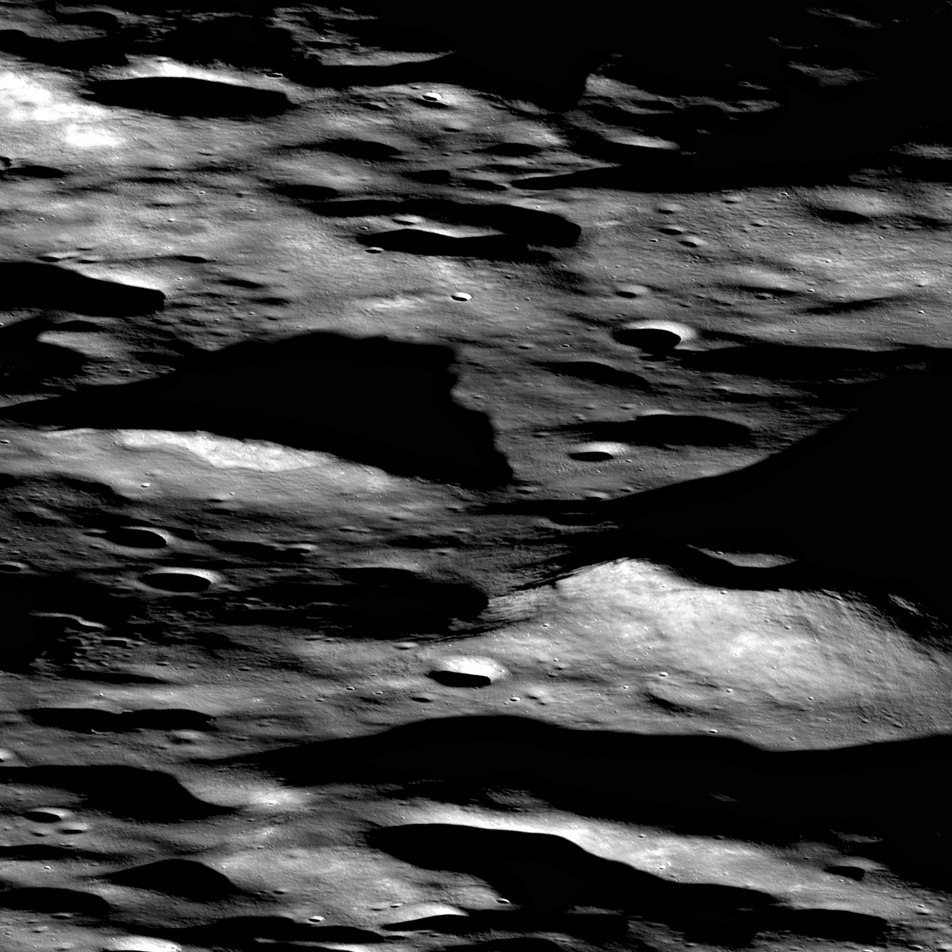
Reflectance values provide clues to composition, but must be separated from the effects of topography. In the image above, the Beta dome slope appears to be highly reflective, but it is steep and facing the Sun. When the topography is taken into account, the reflectance is only slightly greater than those of the Alpha dome, and lower than the reflectance at other areas within the CBVC. The reflectance values suggest that the materials of these two features may be of intermediate silica content, similar perhaps to andesite or dacite. Variations in reflectance among all of the silicic sites may be attributed to mixing of felsic components, the presence of pyroclastic deposits, or intermediate silicic compositions.
The reflectance values measured at lunar silicic sites are similar to reflectance values of exposures of nearly pure anorthosite (PAN) in the Inner Rook Ring of Orientale. PAN exposures have little to no mafic minerals and are some of the most highly reflective materials on the Moon. The LROC team is currently targeting identified exposures of PAN in order to gather more data on their composition. The known composition and measured reflectance of PAN materials will be useful for comparing with the reflectance of silicic/rhyolitic areas, which also have low mafic contents but unknown compositions.
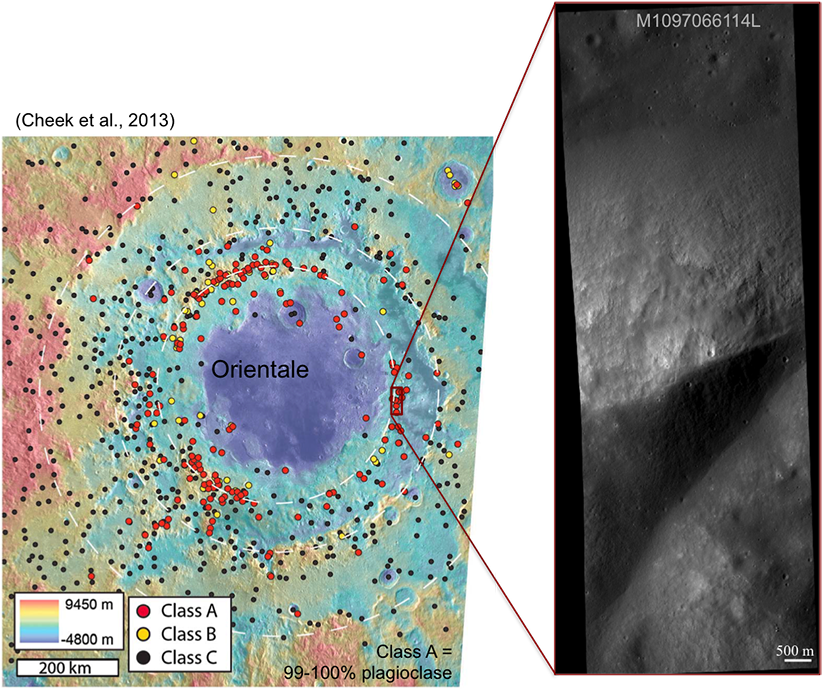
Many recent lunar data sets provide strong evidence for the presence of felsic rock types and pyroclastics at areas of nonmare volcanism on the Moon; however, we need returned samples from one of these sites to confirm the composition and mineralogy at these locations!
Pan around the whole Compton-Belkovich region and explore the diversity of volcanic landforms.
See the full story on photometric analysis of silcic volcanic regions in Icarus:
Clegg-Watkins, R.N., B.L. Jolliff, M.J. Watkins, E. Coman, T.A. Giguere, J.D. Stopar, S.J. Lawrence, (2017). Nonmare volcanism on the Moon: Photometric evidence for the presence of evolved silicic materials, Icarus, 285, 169-184, doi:10.1016/j.icarus.2016.12.004
Related Featured Images:
Mons Hansteen: A Window into Lunar Volcanic Processes
Gruithuisen Domes – Constellation Region of Interest
Low Reflectance Deposits on the Lassell Massif
New Views of the Gruithuisen Domes
Published by Ryan Watkins on 5 June 2017